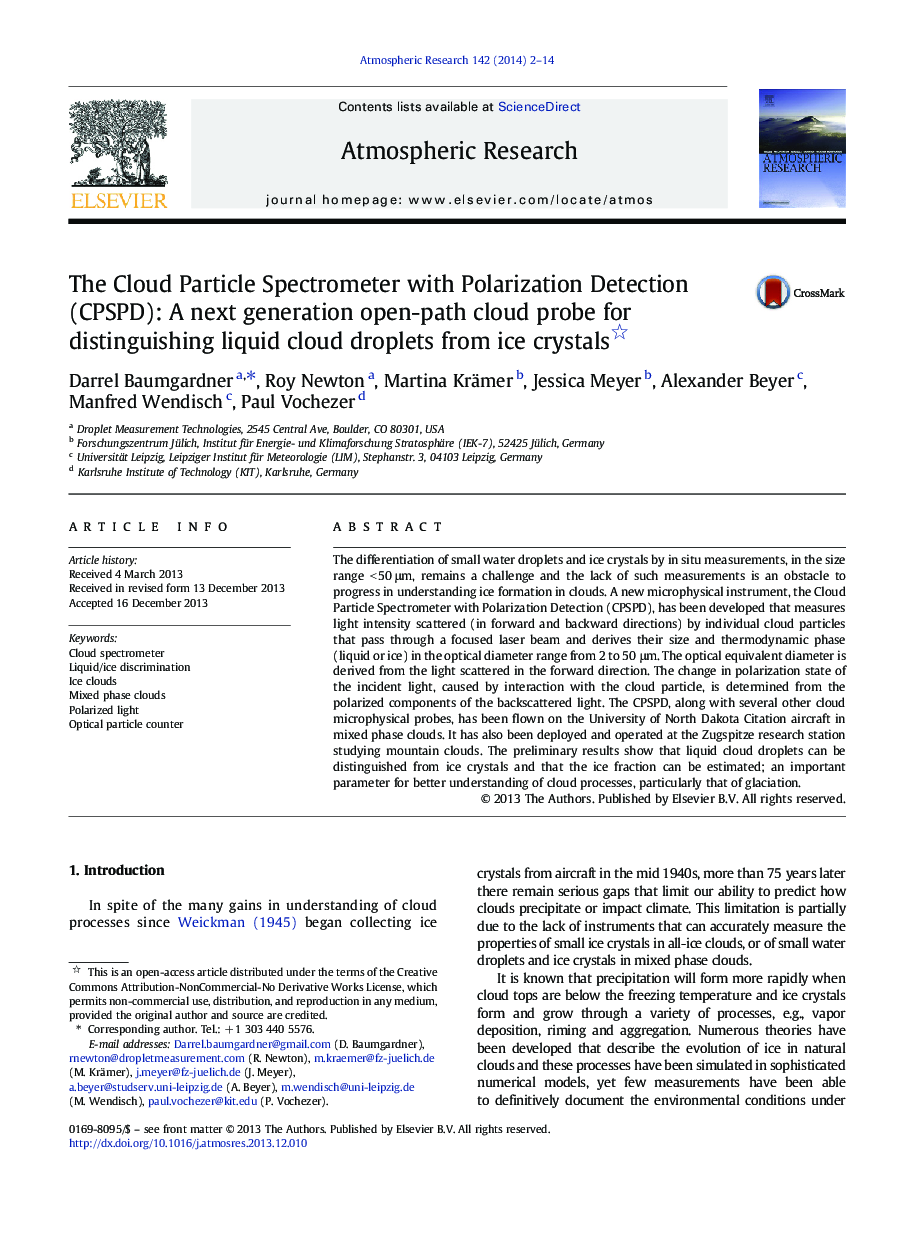| Article ID | Journal | Published Year | Pages | File Type |
|---|---|---|---|---|
| 6343478 | Atmospheric Research | 2014 | 13 Pages |
Abstract
The differentiation of small water droplets and ice crystals by in situ measurements, in the size range < 50 μm, remains a challenge and the lack of such measurements is an obstacle to progress in understanding ice formation in clouds. A new microphysical instrument, the Cloud Particle Spectrometer with Polarization Detection (CPSPD), has been developed that measures light intensity scattered (in forward and backward directions) by individual cloud particles that pass through a focused laser beam and derives their size and thermodynamic phase (liquid or ice) in the optical diameter range from 2 to 50 μm. The optical equivalent diameter is derived from the light scattered in the forward direction. The change in polarization state of the incident light, caused by interaction with the cloud particle, is determined from the polarized components of the backscattered light. The CPSPD, along with several other cloud microphysical probes, has been flown on the University of North Dakota Citation aircraft in mixed phase clouds. It has also been deployed and operated at the Zugspitze research station studying mountain clouds. The preliminary results show that liquid cloud droplets can be distinguished from ice crystals and that the ice fraction can be estimated; an important parameter for better understanding of cloud processes, particularly that of glaciation.
Related Topics
Physical Sciences and Engineering
Earth and Planetary Sciences
Atmospheric Science
Authors
Darrel Baumgardner, Roy Newton, Martina Krämer, Jessica Meyer, Alexander Beyer, Manfred Wendisch, Paul Vochezer,
